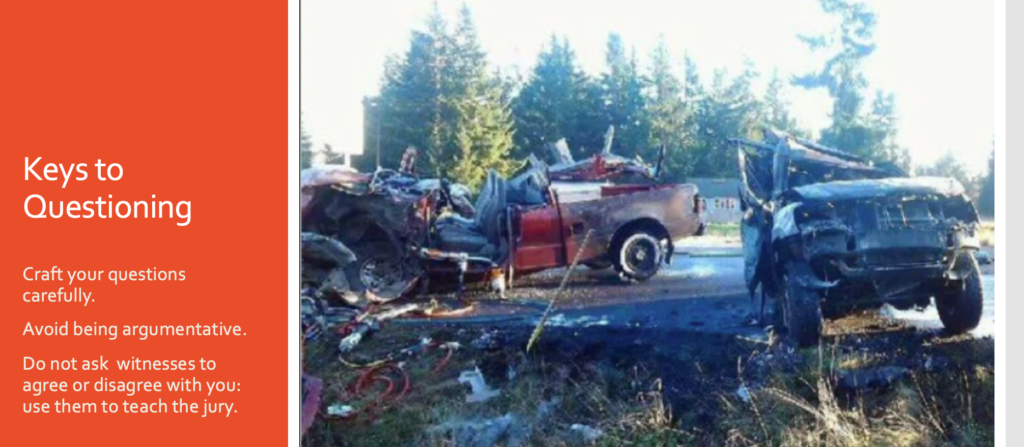The following information is an excerpt of a presentation given to the Academy of Truck Accident Attorneys by plaintiff’s lawyer Kevin Coluccio.
I have taken the depositions of many motor carrier Safety Directors. As I became more experienced and knowledgeable, I developed the skill of questioning defendant witnesses in such a manner as to make them experts to support the claims I was pursuing for the plaintiffs.
To master this technique, a plaintiff’s lawyer must be able to detail the rules, regulations, guidelines and standards governing the safe operation of commercial semi-trucks.
Asking questions
One key is to ask open-ended questions seeking information and knowledge.
Let the witnesses teach you and, in effect, the jury. In teaching this technique, I have suggested using a friendly and conversational tone.
Do not worry that the witness will provide information that is contrary to the opinions you seek to establish your case. A safety director that takes unsupportable positions, and positions that on their face are illogical or outrageous, will only benefit your case.

Establishing an expert witness
The court standards for qualifying a witness as an expert are fairly standard amongst the courts.
Basically, if scientific, technical, or other specialized knowledge will assist the trier of fact to understand the evidence or to determine a fact in issue, a witness qualified as an expert by knowledge, skill, experience, training, or education, may testify thereto in the form of an opinion or otherwise.
A motor carrier’s safety director would qualify under this standard. If they don’t, for any reason, then that would be a big win for you as the plaintiff’s lawyer.
Deposition questioning
You want these witnesses to outline the rules, regulations and standard that the truck driver and the motor carrier were required to follow.
The following is an example of the questioning I have used to establish a safety director as an expert witness, providing standards that helped bring justice to a claim in which my client was run over by the back wheels of a tractor-trailer.
Q. Please explain to the jury the principles of the Smith System.
A. The principle of the Smith System is to give the driver space, time to evaluate the potential hazards that may come in close proximity to their vehicle or themselves.
Q. Is that it?
A. Pretty much it in a nutshell.
Q. Can you expand from the nutshell?
A. Yes. Number one key, aim high in steering. Aim high in steering means you pay attention to the — when you’re traveling down the road, that you’re looking at least 15 seconds down the highway to make sure that your vehicle, that you have time to react to any potential hazards you may come across, whether it’s a vehicle on the side of the road, whether it’s a vehicle passing you, gives you time for that, leave yourself an out. That gives you time to make sure that you have availability to leave yourself an out, and operate the vehicle in a — at a proper manner. And also to keep your eyes moving.
Our drivers check their mirrors every five to eight seconds. It’s constantly. It’s a known fact if you fixate on one object for long amount of time, you become focused on that one object and the other goes away. You don’t see the other things.
The other thing is, too, when we talk about our Smith System, it’s a developed, proven developed program that we operate by and follow the rules.
After getting the safety director to testify about the required standard for his commercial drivers, I asked a question directly related to the case at hand.
Q. What if he’s not sure he can clear a pedestrian or a fixed object?
A. He would stop.
Q. What does the Smith System teach you to do?
A. Stop and re-evaluate.
This is just an example of using few simple questions to get the safety director to first teach the standards and then follow up questions to apply the facts of our case to the standards.
There should be no fear that the safety director will testify that the standards don’t apply to the facts of the case. If they do, then jury will see right through that testimony.
In closing, if you are going to represent the victims of truck crashes, you must know the rules, regulations, guidelines and standards for commercial drivers in great detail and in questioning a safety director, you must craft you questions carefully.
Attorney Kevin Coluccio has represented people injured or the families of those killed by truck crashes for more than 30 years. He is considered one of the top truck crash attorneys in the Pacific Northwest.




